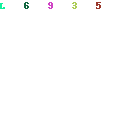Wow thanks for all the replies, this has all been super informative, but I guess I should have been more clear about my situation.
This is a hobby for me, not a pursuit into a new career, I am considering doing what I call "splurging" on a 400-500$ lens (tamron or sigma 17-50 2.8) for my own uses. I dont have a budget too far beyond that, however I would consider getting a light or two. I AM still open to other suggestions in, or closer to, that price range.
My boss currently takes pictures with his iphone because he doesn't like paying for professional photos, unless it's being featured in something. I would just like to try and get better at taking indoor pictures, dealing with lighting, framing, and I'm going to use our projects to practice with.
I am sure better photos can be taken with the gear I already have/will have. Since a 2,000$ lens is not happening, or a full frame upgrade, what are peoples thoughts?
I also have a tripod that I am willing to say is good enough for what I'm doing.


